White Wagtail (Motacilla alba) at Falls Lake, Wake Co., NC

North Carolina's first White Wagtail was found at the Swim Beach at Sandling Beach State Recreation Area at Falls Lake by Jill Froning and Karen Bearden on 10/22/2002.
It remained throughout the afternoon, when I took these photos, and was observed by 20 or more birders at close range. The bird has not been seen since.
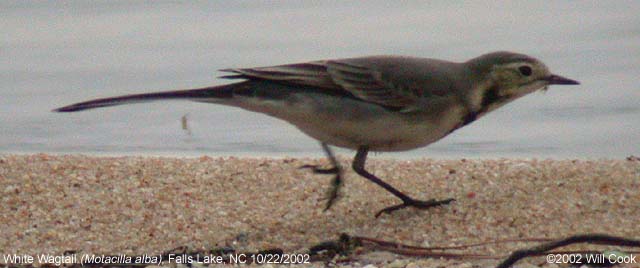
A very active feeder, it spent its time catching small flies along the shoreline, while constantly whipping its tail up and down. It worked the entire length of the beach north to south, then back north, then back south, and so forth until the end of the day.

We tentatively identified the bird as a first-winter White Wagtail, instead of the very similar Black-backed Wagtail, based on study of the Sibley guide. All who have viewed these photos, including Sibley and several experienced European birders, have all agreed with the initial ID. It's probably a female, but we can't be certain about this.

Nicely showing the pattern on the wing coverts.
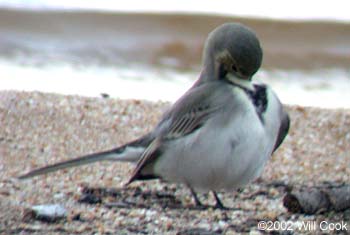
Quiz bird!
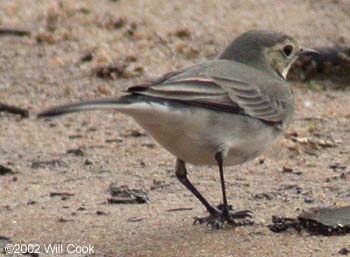
The plain face, with no dark line in front of the eye, helps narrow the identification down to one of the European subspecies of Motacilla alba: White Wagtail (M. a. alba) or Pied Wagtail (M. a. yarrellii).
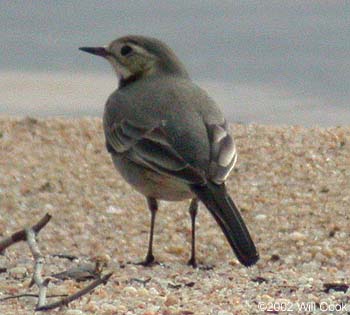
In M. a. alba, the uppertail coverts are black, while the rump is gray. Both uppertail coverts and rump are black in M. a. yarrellii. This helps clinch the ID of this bird as M. a. alba. Other characters supporting the identification as M. a. alba include the relatively pale back and clean whitish flanks lacking dark grey.
This may be the first U.S. record of Motacilla alba alba. There's at least one documented record from Quebec.
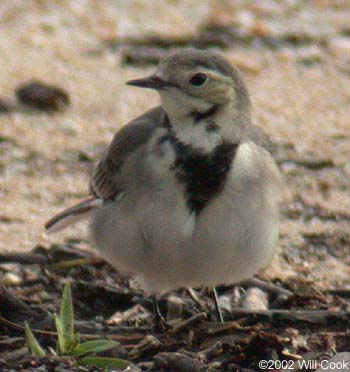
All these images were taken with a Nikon CoolPix 995 digital camera hand held to a Swarovski AT-80 HD scope. I set the ISO to 400 to decrease the exposure time -- definitely needed for such an active bird, especially with overcast skies and hand holding the camera. The photos are noticeably grainy at ISO 400, but they would probably all be blurred if I had used a lower ISO.